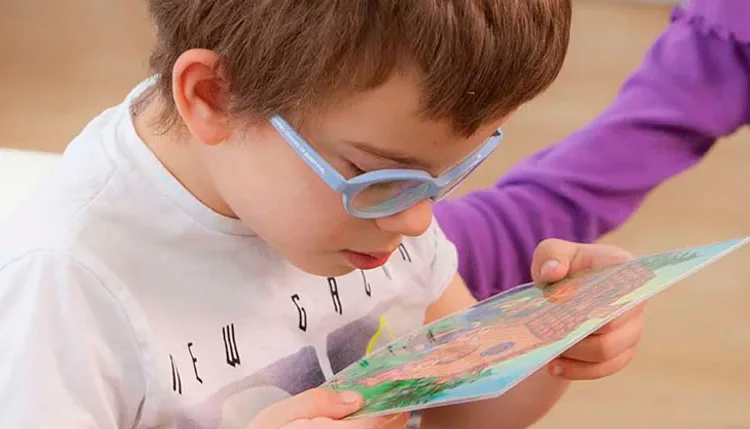Speech therapy, once primarily associated with correcting speech impediments, has evolved into a dynamic field encompassing a broad spectrum of communication disorders and innovative interventions. From traditional techniques to cutting-edge technologies, speech therapy continues to adapt, offering new avenues for individuals to overcome communication challenges and achieve their full potential. In this article, we explore the evolution of speech therapy, highlighting key innovations and insights that have shaped the field into what it is today.
Foundations of Speech Therapy:
The roots of speech therapy can be traced back to ancient civilizations, where rudimentary techniques were used to treat speech and language disorders. However, it wasn’t until the late 19th and early 20th centuries that speech therapy began to emerge as a distinct discipline within healthcare. Pioneers such as Alexander Graham Bell and Charles Van Riper made significant contributions to the field, laying the groundwork for modern speech therapy practices.
Early interventions focused primarily on correcting speech sound production through exercises and drills, known as articulation therapy. However, as our understanding of communication disorders expanded, so too did the scope of speech therapy, encompassing language disorders, voice disorders, fluency disorders, and swallowing disorders.
Innovations in Assessment and Diagnosis:
Advancements in technology have revolutionized the assessment and diagnosis of communication disorders, providing speech therapists with powerful tools to evaluate clients more accurately and efficiently. Standardized tests, computerized assessments, and instrumental techniques such as videofluoroscopy and fiberoptic endoscopic evaluation of swallowing (FEES) enable therapists to identify underlying physiological issues contributing to communication difficulties.
Furthermore, the integration of telehealth and remote assessment platforms has enhanced access to services, particularly in underserved areas or for individuals with mobility limitations. Tele-assessment tools allow speech therapists to conduct evaluations remotely, providing timely interventions and reducing barriers to care.
Expanding Therapeutic Modalities:
Speech therapy interventions have diversified to encompass a wide range of therapeutic modalities, catering to the diverse needs of clients across the lifespan. Traditional techniques, such as articulation therapy and language drills, remain foundational components of therapy. However, therapists now incorporate a variety of evidence-based approaches, including:
Augmentative and Alternative Communication (AAC): AAC systems, ranging from low-tech communication boards to high-tech speech-generating devices, offer nonverbal individuals a means to express themselves effectively. These systems empower individuals with severe communication disorders, including those with autism spectrum disorder (ASD), cerebral palsy, or acquired brain injuries.
Social Communication Interventions: Recognizing the importance of social communication skills in everyday interactions, speech therapists employ strategies to enhance pragmatic language abilities, such as turn-taking, maintaining eye contact, and interpreting nonverbal cues. These interventions are particularly beneficial for individuals with social communication disorders, including those with autism or social anxiety.
Cognitive-Communication Therapy: For individuals with cognitive-communication deficits resulting from traumatic brain injury, stroke, or neurodegenerative disorders, cognitive-communication therapy focuses on improving attention, memory, problem-solving, and executive functions. By targeting underlying cognitive processes, therapists help clients overcome barriers to effective communication and functional independence.
Voice Therapy and Vocal Rehabilitation: Voice therapy techniques address a wide range of voice disorders, including hoarseness, vocal nodules, and vocal cord paralysis. Through exercises, vocal hygiene education, and vocal resonance training, therapists help clients develop healthy vocal habits and optimize vocal quality for speaking and singing.
Incorporating Multidisciplinary Collaboration:
Speech therapy has increasingly embraced a multidisciplinary approach, recognizing the interconnectedness of communication with other domains of health and well-being. Collaboration with professionals from fields such as otolaryngology, neurology, psychology, and education enhances the comprehensive care of individuals with complex communication needs.
In clinical settings, speech therapists often collaborate with otolaryngologists to assess and treat voice disorders, neurologists to manage communication deficits resulting from neurological conditions, and psychologists to address the psychosocial aspects of communication disorders.
In educational settings, speech therapists collaborate with teachers, special educators, and school psychologists to support students with speech and language difficulties in academic settings. This collaboration ensures that interventions are tailored to the individual’s needs and integrated into their educational curriculum effectively.
Embracing Cultural Competence and Diversity:
As the global population becomes increasingly diverse, cultural competence has become an essential aspect of speech therapy practice. Speech therapists recognize the importance of understanding and respecting the cultural backgrounds, values, and communication styles of their clients. Culturally responsive assessment and intervention approaches ensure that therapy is effective and relevant to the client’s lived experiences.
Moreover, speech therapists strive to address disparities in access to care and quality of services among underserved populations, including ethnic minorities, immigrants, and individuals from low socioeconomic backgrounds. Outreach programs, culturally tailored interventions, and bilingual services aim to bridge the gap and ensure equitable access to speech therapy services for all.
Conclusion:
Speech therapy continues to evolve in response to advancements in technology, changes in healthcare delivery models, and a growing understanding of communication disorders. From traditional techniques to innovative interventions, speech therapists are at the forefront of improving outcomes for individuals with communication challenges. By embracing multidisciplinary collaboration, incorporating diverse therapeutic modalities, and advocating for cultural competence, speech therapy remains a dynamic and indispensable field in promoting communication, connection, and quality of life for individuals worldwide.


Comments are closed.